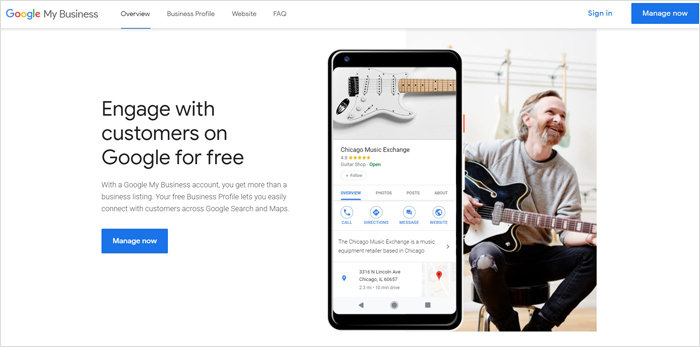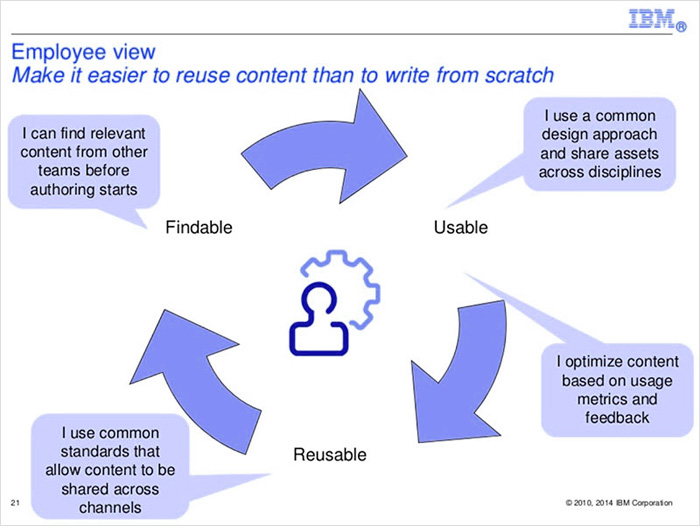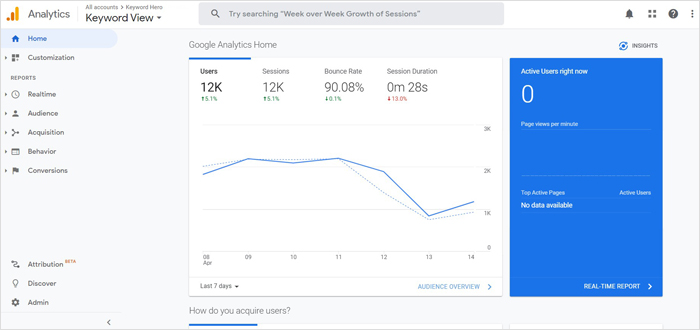When businesses reach the point where they are ready to start scaling their content creation, they often encounter the problem of how to go about it. They may already have some content in place, but meeting the growing needs of their business becomes a challenge that many businesses aren’t ready for.
The purpose of this guide is to explain content types and their importance to your business as well as show you methods to help with scaling your content creation. One of the important things to remember before you start scaling is to look at how your content is performing. Even if you outsource your content creation, looking at earlier content compared to more recent work should show a noticeable difference.
Before we dive into the tips on how to scale your content, including posting on your blog more frequently, we’re going to dive into the types of content you can create, as well as some methods to find quality content and content writers.
Scaling your content creation is not a one-dimensional process. You want to grow outward and upward. Finding new avenues to generate or acquire content and new types of content to create will expand your digital footprint and improve your page rank.
We recommend you use your page rank as one of the primary metrics when scaling your content. With more high-quality content, your page rank should improve. To start, check your page rank before you begin and then again as you begin scaling. Checking incrementally will let you know what’s working and what isn’t.
Now that we’ve explained what you should be tracking as you scale, this first section of the guide will cover different types of content and how they fit into your content marketing strategy.
Table of Contents
Content Types and How They Fit
If you’re just starting or have yet to branch out in terms of content creation, then you’ve likely been relying on your on-page SEO and blog content to draw traffic to your site. This is a good starting point, especially if you’re still building your brand, but sticking with one content form won’t keep you going forever, and it certainly won’t capture or satisfy your entire audience. It’s important as you grow to diversify your content strategy so that you are making use of everything available in your niche to engage your target audience.
To help you get a feel for scaling your content, we’ll describe some of the types of content and how they fit into your business.
Social Media
Now, obviously, social media isn’t the first thing you think about for every business. However, even if you don’t plan on maintaining a highly active content presence, you should at least have some type of social media presence on the web, even if you only use it as a forum and back-channel for directing people to your website.
You can use your social media as a content platform by posting on Facebook, Twitter, and Instagram regularly to draw in business. There are a number of ways to do this that we’ll get into in a bit. Still, at the very least, you need these pages posted with up-to-date and relevant information on your business, as well as links to your website and your business profile on services like Google My Business.

For content, we won’t go into all the boring details about social timing; just know that when you create content for social media, you need to make sure your audience will be online to see it. Facebook posts are great for reaching people. You can use short posts to remind followers about upcoming sales, important reminders, or even just short blurbs that get your business stuck in people’s brains.
A few posts a day is enough for Facebook, and it doesn’t have to be brand new every time. Create a pool of reusable posts and then add to or update the pool as things change.
For Twitter, posts should be many times a day every day. Again, creating a pool and circulating through them will make things easier for your content creators. Tweets are short and to the point, so use memorable slogans, quick, witty remarks that relate to your brand, or just remind users that they’re missing out on something you offer.
Instagram is the last of the big 3. The posts on Instagram tend to last longer, and since you can post different forms of content, here is where you can post content like short videos introducing your products, images that show off what you do, etc. You can also create graphics that give information. One useful thing that some businesses do with Instagram content is to pose a question about their business and then let users respond. This can help you keep on top of what your target audience needs and wants.
Posts can last 2-3 days on Instagram so posting about that often will keep you fresh.
Authoritative Content
Here we’re talking about longer form and more detailed content designed to make you an authority in your field. While blog posts usually carry some pertinent information, they are often shorter, more to the point, and don’t carry a lot of detail.
Truly authoritative content like how-to guides (like this one) tend to be much longer and are chock full of useful information, extra tips, links to relevant internal and external sources, and other tidbits that will help further your understanding of a subject.
Becoming an authority in your field not only improves your page ranking, but also your credibility, trust, and authority on the web. Eventually, other sites may look to your content to help supplement their own. This can lead to beneficial partnerships that help draw in more potential customers.
Curated Content
Curated content is basically content that you hand select and link to from around the web. These can be informative articles, new pieces of information that have come out about your industry, interesting trends, or other content. The important thing is that it is authoritative and relevant to your niche.
Finding links to curated content often requires the help of a content management service. These types of content can add loads of value to your site and can help take some of the load off of your writing staff. Roughly a quarter of your content can be curated from other sites.
Building relationships with credible sources is a key way to scale your content without increasing your own production.
Now that we’ve talked about some of the content types, we’re going to go over how you determine where to scale and how fast.
Determining How to Scale
Before we talk about tips to help you scale, the first thing you want to do is gather your marketing and salespeople and figure out how you want to scale your content. If you haven’t been doing much with your content as yet, then having a strategy meeting to determine where you want to go with it can help you figure out how to scale.
Rather than throwing things at the wall and seeing what sticks, you should decide the intent of your content strategy and work towards that.
For example, if you’re purely trying to drive traffic, then social media content might be the best option. If you’re working towards better SEO, then blogs and curated links are a great option. If you’re wanting to build authority, then long-form informative content can help with that.
It’s called scaling your content and not growing because your content output should match your business’s growth (believe it or not, there is a difference between growth and scale). You’re not producing content for the sake of it; that would be counterproductive.
Tips For Scaling Your Content
Now we’re on to the juicy bits of the guide that you can use to plan out your content scaling and find ways to acquire more content that will help you grow with your business.
Create a Process
Content doesn’t appear out of thin air and neither do ideas. The first piece of the content scaling puzzle is to create a process to organize all your ideas into workable pieces of content.
Writing down all your ideas, the thoughts from your marketing and sales teams, getting data together, and putting it all in one place will let you work out where your content needs to go.
From there, you can create a concrete marketing strategy to work from. This should essentially identify all of your target goals with your content. You should already have figured out your brand voice by this stage, as well as the message you want to get across.
Your goals should put you in a better position over the next 6 to 12 months. Apart from the ideas and goals that line up with your brand vision, you also need measurable metrics to test if your results are where they should be. All of this should be cataloged and shared with your entire team to ensure everyone is on the same page.
Create a Productivity Tracker
This is essentially about creating a system to keep track of your content goals. It can be a production metric like the number of pieces produced per medium, hitting target posting times, a calendar with key dates for specific posts, or any number of other tools to help your team keep track of what they should be doing to keep your content goals in line with your business.
While it takes time for content scaling to really show results, having measurable goals each week, month, or quarter can help you keep pace with your business and what you hope to accomplish.
As your needs change, update the progress tracker with new goals. Keeping track of all the different content streams and forms of content can be difficult, even for an experienced marketing team, so it’s important to utilize content management tools from a reputable content management service. You probably already have some tools in place, but as scaling is the final step in the content marketing process, keeping up the pace of scaling can be difficult, even if you prepare properly.
Quality First
This next tip is fairly simple: content may be king, but quality breeds success. Rather than pumping out content by the shovel full, the goal is to produce quality, meaningful content that means something to your customers.
Fewer content pieces of higher quality will do more for your business than an entire truckload of low-quality filler content. Sure, you might gain some page rank or site authority initially, but that will quickly wear off as your content devalues your business.
Instead, focus on content that brings value to the space you’re in. Even if it means fewer overall pieces. You can use link exchanges and curated content to help fill the content gaps where you may not be able to produce as much content.
Enlist the Help of Others
We mentioned this at the beginning but creating all of your content yourself or even with your sales and marketing team is not the ideal situation. Managing multiple forms of content at a high pace while still producing quality requires the help of content professionals.
Hiring professional writers for your staff or outsourcing to a content agency can take the load off and give you some measure of control over the quality of your content. Finding content creators who are already experts or at least highly knowledgeable in your field can help to produce informative pieces without long delays or multiple rounds of editing.
If you’re already at the point of scaling your content, then you likely have a budget set aside for content creation. Use your marketing strategy and figure out the best ways to allocate that budget without putting undue strain on your marketing team.
Find Ways to Cycle Content

As we stated earlier in the guide, fresh content generation is a difficult and time consuming process.
One of the ways to combat this is by being able to recycle content. This is only doable with certain types of content, like social media, but can save lots of time and effort over the long term.
Creating a pool of posts to cycle through on different social platforms will allow for less day-to-day content generation and focus on other forms of content that must remain fresh. Reusing content of other forms is actually a bad idea. Content such as blogs can show up as duplicate content if it is reused. This will incur a penalty from Google.
Hiring writers to write guest posts to freshen up older content is a great way to keep content alive and put it back into circulation. While you can’t reuse all your content, trying to make the most of what you have will save you time and increase productivity while you scale.
Use Templates
One way to speed up output, especially if you’ve already got all of your SEO assets in place, is to create templates for different forms of content. This allows your team or the writers you hire to create content much faster and according to your specific needs.
Templates can be tailored to your needs and your audience so that you make sure every piece is as on-brand as possible. Templates don’t work for every type of content, but for routine production of newsletters, emails, graphics, or blurbs and slogans, templates can save the day.
Branch Out
One of the best ways to find out what types of content your users want is to go to them directly. Part of keeping your content fresh is delivering on what users want.
Talk to your customers, read their online reviews, talk to colleagues in the space – heck, even your competitors can have insight into what types of content and topics will make your business more successful.
By using customer feedback and real-world information, you can build out trust for your brand and your authenticity as customers will see you paying attention and listening to what they want and need. This can even impact other areas of your business outside of content marketing.
Measure Your Success

This is the last piece of the puzzle but one you should be doing throughout the entire process. Success can mean different things to different businesses, from higher site traffic to higher SERP ranking, more sales, more mentions on social media, more referrals from other sources – all these things can be measures of success.
There are plenty of tools to help you track these metrics, like Google Analytics. If you’re not measuring your success as you go, you may be wasting effort, time, and money.
Final Thoughts
Well, there you have it, our guide to scaling your content creation to meet the ever-increasing demands of your business. The key tips we can give are knowing your market, knowing your goals, and using all of the content types at your disposal to reach them.
You never want to paint yourself into a corner as a business and be labeled as one-dimensional. To grow properly, you need to expand and evolve. This includes the content you create.
If you are looking to learn how to start your own blog or need assistance in scaling your content, please reach out!
Tim holds expertise in building and scaling sales operations, helping companies increase revenue efficiency and drive growth from websites and sales teams.
When he's not working, Tim enjoys playing a few rounds of disc golf, running, and spending time with his wife and family on the beach...preferably in Hawaii.
Over the years he's written for publications like Forbes, Entrepreneur, Marketing Land, Search Engine Journal, ReadWrite and other highly respected online publications. Connect with Tim on Linkedin & Twitter.
- How to Rank for Local SEO in Multiple Locations - April 16, 2024
- SEO for Mass Tort Lawyers: Everything You Need to Know - April 3, 2024
- Natural Backlinks vs. Unnatural Backlinks: How to Build a Natural Link Profile - April 1, 2024




